recently I took a trip to Mexico, and while there, I was lucky enough to swim with the whale sharks.
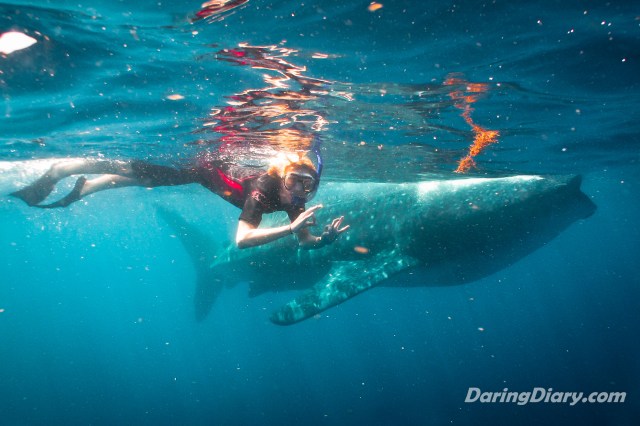
I knew before I left that I would probably get to see them, but it wasn’t guaranteed. I had spoken with a woman on the boat to Catalina the week before about her trip to Mexico and her experience seeing the whale sharks. She had mixed feelings, which I realized i was beginning to have as well. Although they are wild animals and their whereabouts can’t be guaranteed, this gathering of whale sharks in Mexico during this time of year is the largest in the world. The only reason I might not see them is because I would choose not to.
“In more recent years, however, the whale sharks have been aggregating on the Caribbean side of the peninsula in an area to the east of the National Park island of Isla Contoy and not far from the major tourist destination city of Cancun. This event is much larger and is, in fact, the largest aggregation of whale sharks anywhere in the world, with 300 or more whale sharks in the same place on some days. The animals come to feed on tuna eggs and they offer a spectacular ecotourist experience because the “afuera aggregation” as it is known, involves so many animals and takes place in warm, clear, blue offshore waters.” Tour operations have pounced on the opportunity, and their enthusiasm has been cause for concern.
In my truly blessed life, I have had the opportunity and the guts to travel to some cool places and see some cool things. And very often, I find that I am asking myself a question. That question is: Do I want to add some small amount to the destruction of an animal or monument and see it while I can, or take the high road, do no damage, and perhaps miss out completely on its glory.
“The first problem is that the proximity of the 900lb gorilla that is Cancun provides an effectively unlimited scope for growth in the ecotourism industry, which is otherwise self-limiting in smaller towns such as Holbox. The second problem concerns jurisdiction; the afuera location is not inside any National Park boundary and it is not always clear which state or federal agency is responsible for the stewardship of the animals. The combination of these two factors has led to an exponential growth in the number of ecotour operators and the number of boats visiting the aggregation, and a reliance on self-regulation which is, frankly, failing. It is rapidly developing into a classicTragedy of the Commons scenario, in which the competing interests of individual operators inevitably overwhelm their common goal of protecting and preserving their livelihood, eventually resulting in the destruction of the very resource on which they all rely.”
I finally bit the bullet and decided that I would see the sharks, because I am so enamored with the ocean, and because a friend had promised me that it wasn’t necessarily that bad. Or at least, this boat wasn’t that bad.
The tour operators I went through laid out some rules. Must wear a life jacket or a wetsuit. Must use special sunscreen that will not harm the ocean, and you won’t be allowed in the water if you use your stuff. No touching the whale sharks. Must be a meter away from the animal. Only two people in the water at the same time, with a guide.
My operation did uphold most of their own rules. And while we cruised into afuera, I saw some other boats that were as well. However, not all of them were following the rules. Not all of them by a long shot.
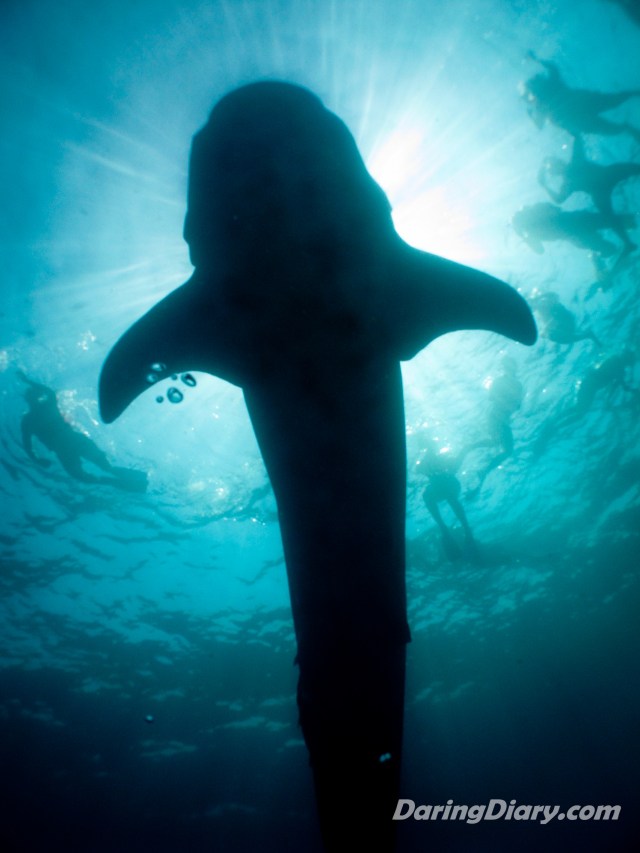
We arrived amidst of flurry of activity, both whale sharks (literally cruising the surface, 50 plus animals) and boats (too numerous to count). THere were snorkelers in the water EVERYWHERE. Some whale sharks were just completely surrounded by kicking, splashing, awkward land mammals. I saw some people touching and holding onto the sharks (our captain always yelled at the people)

Our group was respectful. There was only 7 guests on the boat, and we took turns with our jumps in, and no one touched the sharks, and we listened to our guide. But as amazing as this experience was for me, I can’t help but wonder if I was participating in some small or big way to the destruction of an animal I so adore.
What’s your opinion?
xxmerbabe
Quotes from this article: Whale Shark Ecotourism: the Good, The Bad, And the Ugly There is a striking picture of whale sharks feeding, and boats racing toward them, to showcase how busy afuera gets.
ps have some more pictures:
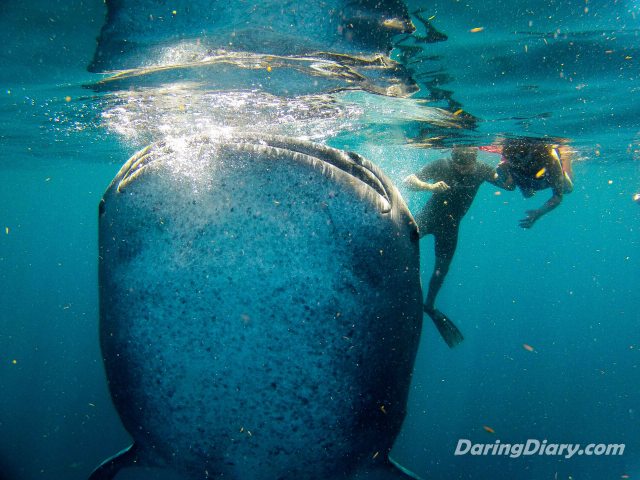
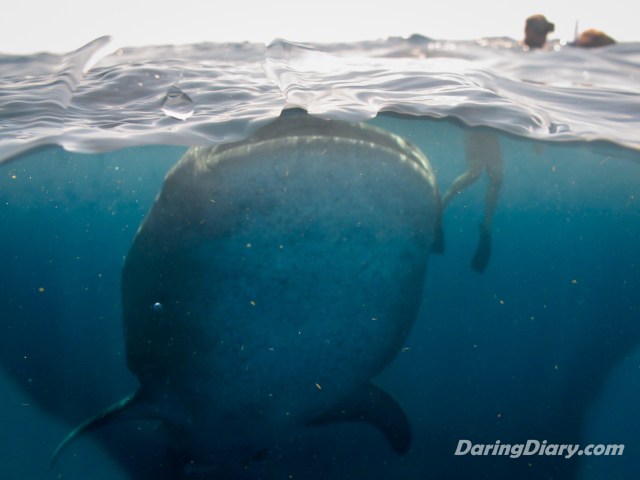
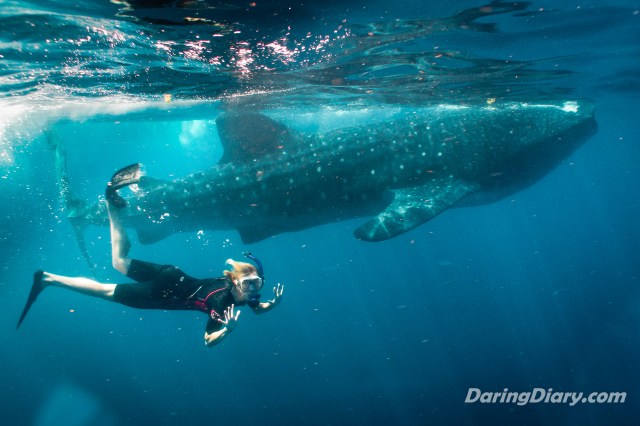
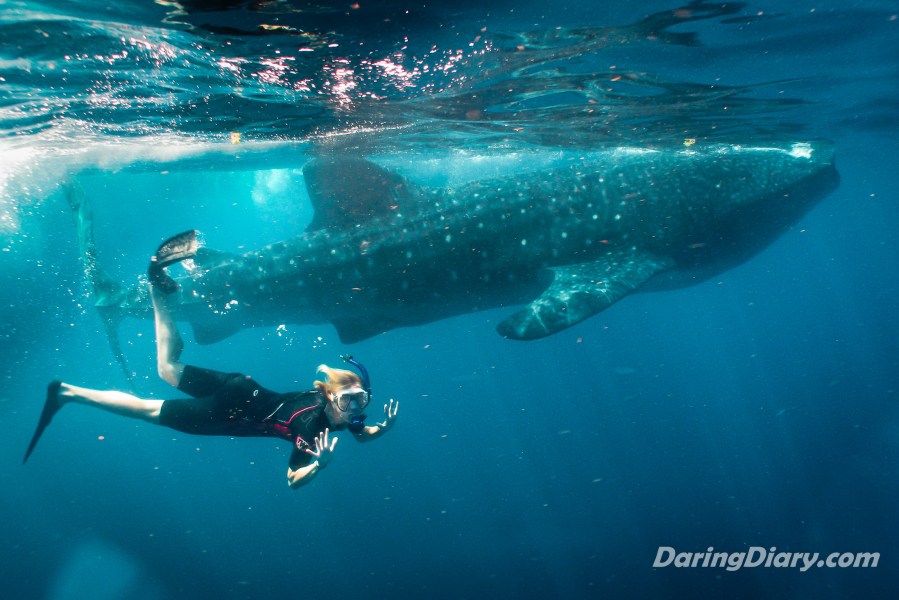
Beautiful pictures!!!
And I don’t think you’re “destroying” anything. It might not be good that big groups of people want to play voyeur and bother them in their daily routines…
and maybe that should change; but what’s the harm with people as yourself, with great respect for living creatures and a profound love for diving?
In my opinion it’s not you, but the herds of tourists and money-making industries that should be constrained.
Keep up the lovely blog! 😉
Nice photos of these magnificent creatures! It’s always hard to draw boundaries when interacting with unfamiliar species, but thinking about the effect we have when interacting with them is always a good step. Keep up the good work!
thanks ScubaDevon! it’s an ongoing conflict, and definitely something to keep in mind during all of my interactions. I like to think I do as little damage as possible, and in other ways can actually make a positive impact.
Pingback: How scuba divers have affected the lives of sharks | The Merbabe Adventures